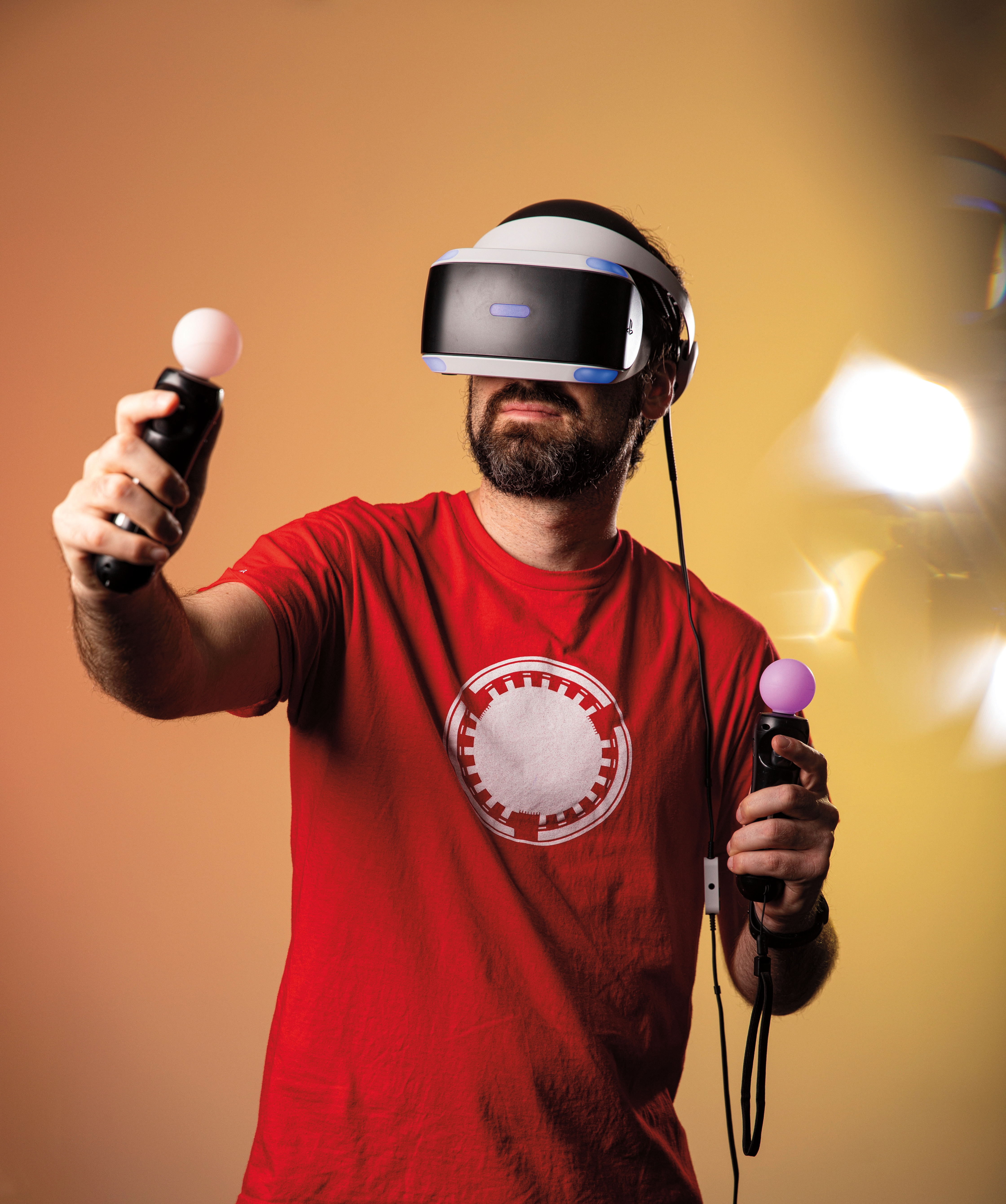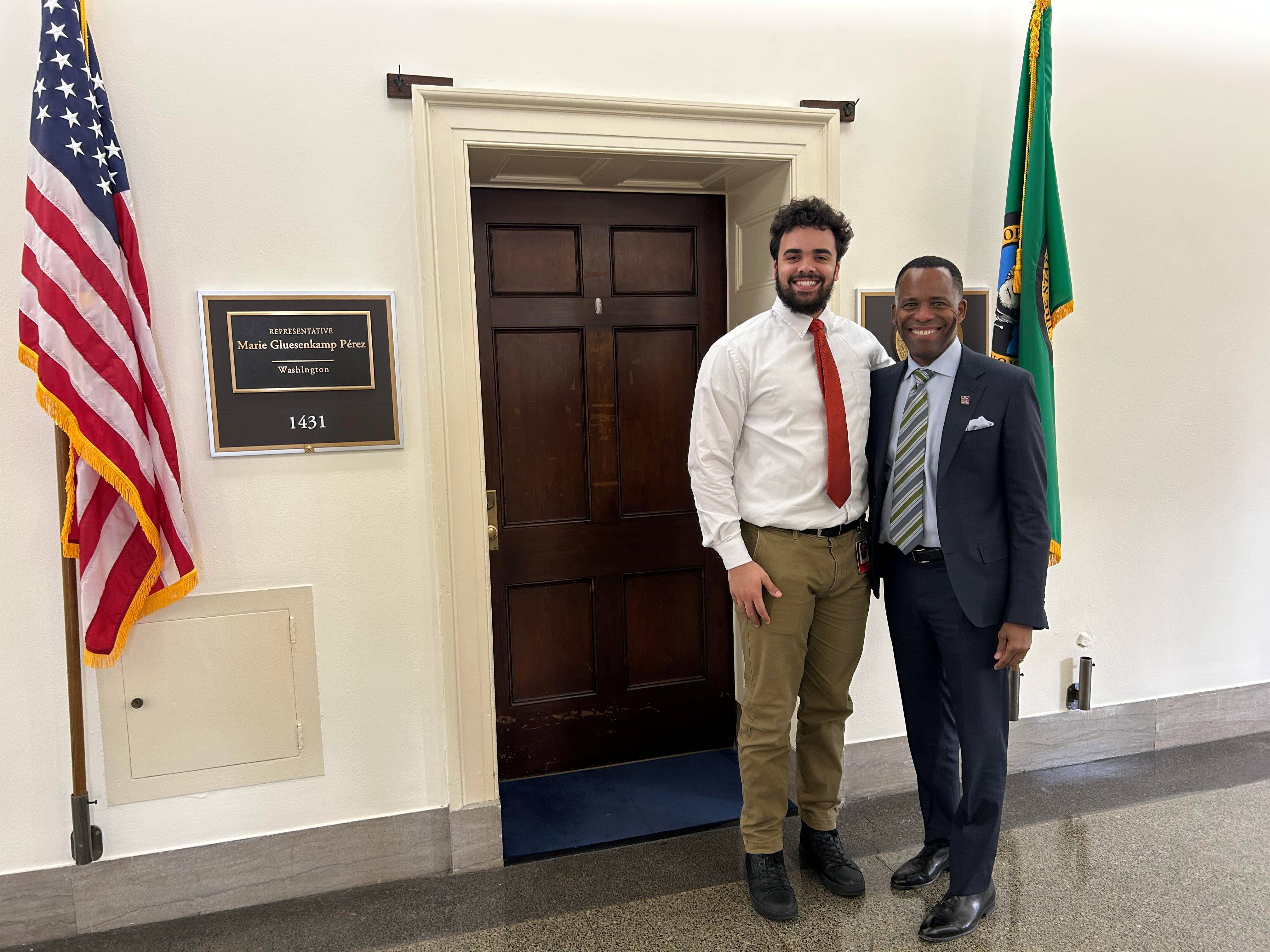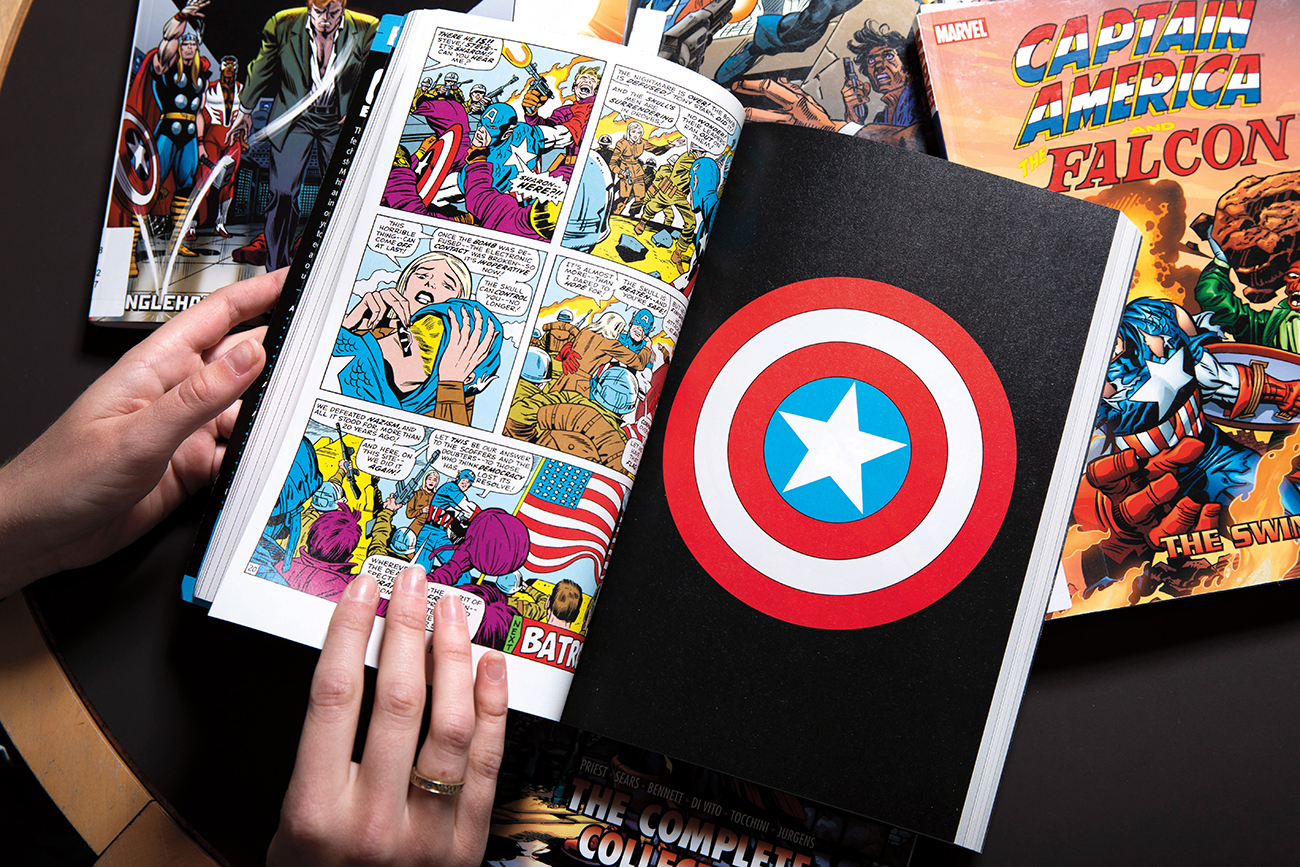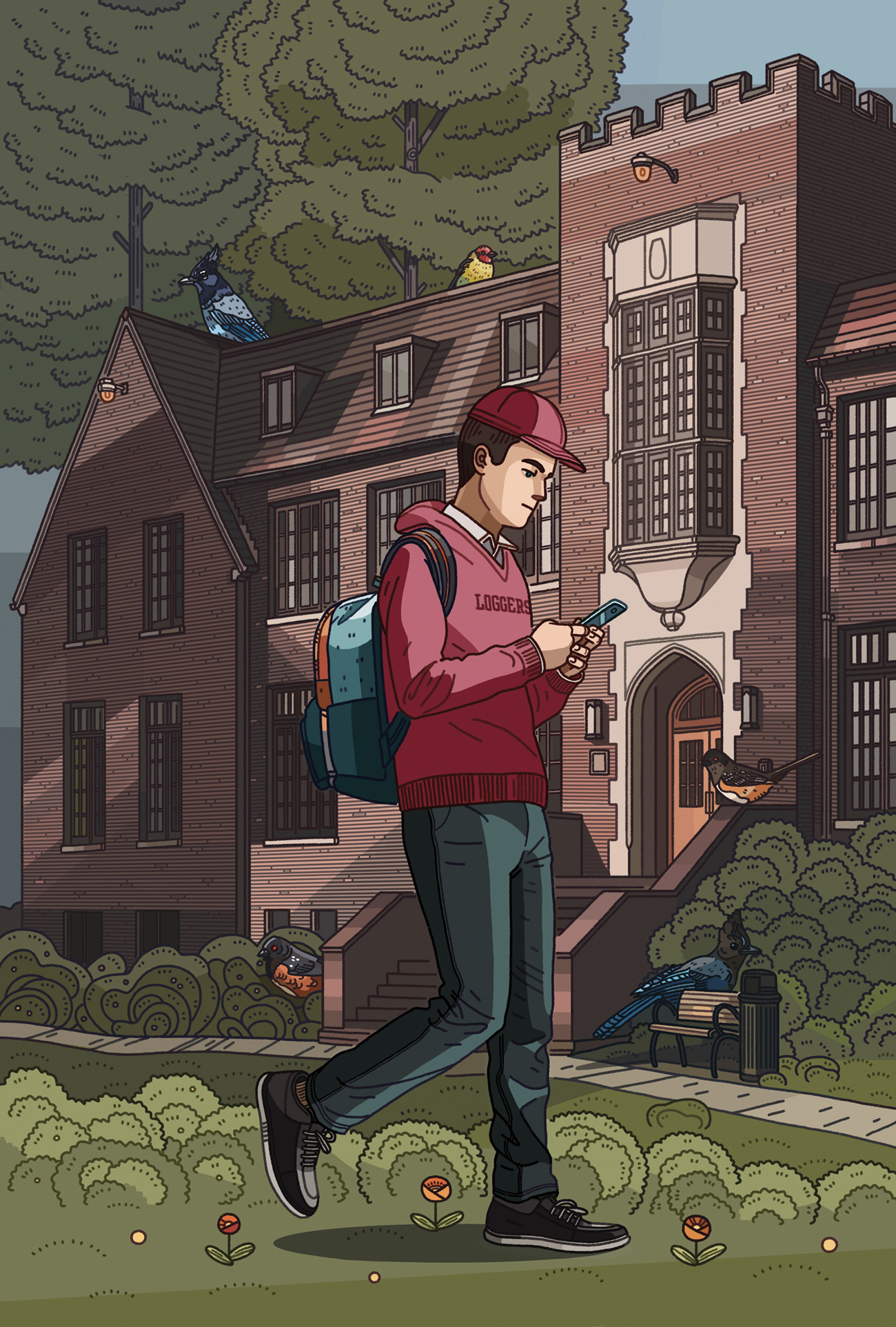While living in Japan and working for Konami, editing documents and translating them between Japanese and English, Payton volunteered to give the company feedback on its Metal Gear Solid: Portable Ops, which was then under development. He would stay up late playing, sending notes to the developers, and so impressed them that they promoted him to an influential role on the development team for the Metal Gear Solid 4 franchise. “That put my career on a rocket ship,” he says.
Payton spent three years at Konami; then, in 2008, his mother got cancer, and he yearned to get back stateside and be closer to his family. That’s when he landed one of the most high-profile jobs in the industry: working for Microsoft as creative director of Halo 4, the wildly popular Xbox video game franchise. “That made big news on the internet,” Matthews recalls. “Ryan wasn’t even 30 at the time. I was like, Holy moly, he’s really achieved.”
Despite the success, Payton struggled to find his path and maintain his voice amid Microsoft’s massive bureaucracy. He called on Matthews for advice on how to be a stronger leader; Payton himself says he didn’t yet understand the nuances of leading a team, and “thought I just wanted the power to tell people what to do. But that’s a very old-school way of thinking about leadership.”
By mid-2011, with Halo 4 still in the development stages, Payton had been demoted to a “narrative designer” position. His decision-making power was taken away, and that’s when he lay on his bed and cried, figuring that after the effort he’d put in to find his way into the gaming world, he’d managed to sabotage his own career. In July, Microsoft asked him to take another job within the company or leave. So he left. “I think, in a lot of ways, my superiors at Microsoft were correct,” he says now. “I should have been fired. I wasn’t as good as I thought I was.”
A short time later, Payton reached out to Matthews again. He’d spent time thinking and recalibrating. Against the advice of his father, he’d decided to start his own company. “Some of my mentors in the gaming industry tell me I’m always taking the most difficult path,” he says. “There’s something about my personality that I always want to take on big challenges—mainly because I know the rewards will be greater.”
Matthews had already told Payton he’d help him out any way he could; Payton presumed that meant with friendship and mentorship, but Matthews was also interested in finding his own toehold in the gaming business. “I didn’t realize what he meant,” Payton says, “until he spelled it out for me: ‘Ryan, I mean investing in the company.’”
Payton wanted to start a boutique company, small and independent, that would take chances and propel the gaming industry into new areas. “Some people say I’m crazy,” he told the gaming site Kotaku in 2012, “but I want to make a game that one billion people play at once, and it’s something that hits them harder than a great book or film.”
It was such an ambitious goal that even after Matthews invested in Payton’s new company, Camouflaj, and agreed to become a board member and offer ongoing advice to Payton, he was fully prepared to lose every penny he put in. But this was the Ryan Payton he’d come to know: willful enough to take the difficult path and hope that he would somehow find a way to make it work.
“You can have a slice of your investment portfolio that’s really high risk,” Matthews says. “My thinking was, I’ll probably lose all my money, but there’s a chance this could be successful. But I just really loved the guy, so I trusted him.”
• • •
Payton started Camouflaj in 2011, and within a year he’d grown the company to roughly 20 employees. He also had an idea for an ambitious new game for the iPhone called République, a thriller in which the game player needs to hack into the surveillance system of a totalitarian state in order to rescue a woman named Hope. In the fledgling years of smartphones, the games mostly lacked sophistication, but now that the iTunes Store was open to outside developers, Payton saw a way in. He set up a Kickstarter campaign to help crowdfund, and raised $550,000, much of it at the last minute, after he decided to create a version of the game for desktop computers, as well.
Payton set up the first Camouflaj office in a former bank in Bellevue, a space so cramped that they left the windows open all the time because it felt like the office was constantly running out of oxygen. The journey was torturous, with long hours, little sleep, and nights of self-doubt about whether République could work. Yet the payoff was worth it: When the game was released in 2013, The Guardian called it “brilliant”; Google Play made it an Editor’s Choice; and one online critic called it “the most ambitious iOS game I’ve ever played.” It sold more than 100,000 copies. Says Payton: “It allowed us to build a legitimate studio, which enabled me to go around and pitch our next game.”














